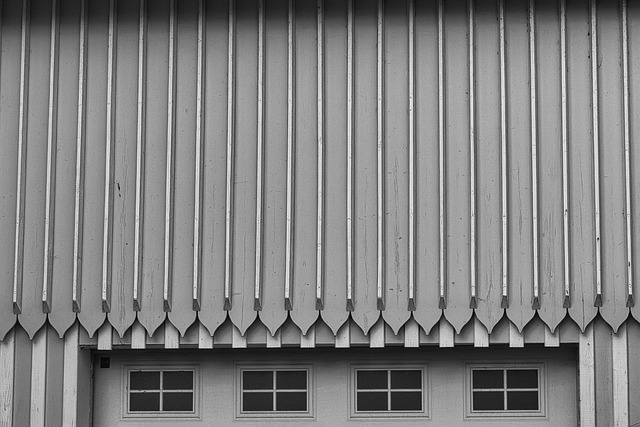Weatherstripping is a simple yet powerful technique that significantly improves energy efficiency in older buildings by creating airtight barriers around doors and windows, reducing drafts and air leaks. It can save up to 30% on heating and cooling bills, enhance comfort, and promote environmental sustainability. Advanced weatherstripping materials like natural rubber, silicon, and recycled foams offer diverse benefits, while high-quality door seals, installed correctly, provide cost-effective solutions. Regular maintenance ensures optimal energy efficiency over time.
“Drafts not only cause discomfort but also impact your energy bills. Explore the power of weatherstripping and door seals as essential energy-efficient door solutions. This comprehensive guide uncovers the significance of these simple yet effective tools in sealing gaps around doors and windows, preventing drafts, and enhancing home insulation. From understanding the basics to choosing the right materials and installation tips, we’ll equip you with knowledge to make your home more comfortable and cost-effective.”
Understanding Weatherstripping and Its Role in Energy Efficiency
Weatherstripping is a simple yet effective method that plays a pivotal role in enhancing energy efficiency, particularly in older homes or buildings. It involves installing flexible seals around doors and windows to prevent air leaks and drafts. By creating an airtight barrier, weatherstripping ensures that heated or cooled air remains inside the building during winter and summer months, respectively. This simple step significantly reduces energy consumption by minimizing the workload on heating, ventilation, and air conditioning (HVAC) systems.
In today’s quest for more energy-efficient door solutions, weatherstripping is often overlooked but should be considered a fundamental first step. It acts as a crucial defense against the elements, sealing gaps that might allow unwanted air infiltration or escape. This not only comforts residents by maintaining ideal indoor temperatures but also contributes to cost savings on energy bills and reduces the environmental impact of excessive energy usage.
Common Draft Sources Around Doors and Windows
Cold air sneaking in through gaps around doors and windows can account for up to 30% of a home’s heating or cooling energy loss, making it a significant factor in rising energy bills. These unwanted drafts often originate from several common sources. Misaligned or damaged door frames and sills can create openings for air to penetrate. Gaps between the door and its frame, as well as around window frames, are also frequent culprits. Older homes may have inadequate weatherstripping or door seals, while new constructions might suffer from poor installation or gaps due to movement over time. Addressing these issues with energy-efficient door solutions is a crucial step in enhancing insulation and reducing energy consumption.
Types of Weatherstripping Materials and Their Benefits
Weatherstripping materials have evolved significantly over time, offering various benefits for improving home comfort and energy efficiency. Natural rubber is a classic choice known for its flexibility and durability. It effectively seals gaps between doors and frames, blocking drafts and preventing air leakage. Silicon is another popular option, renowned for its resistance to extreme temperatures and UV radiation, making it suitable for both exterior and interior applications. For a more eco-friendly approach, recycled materials like foam or plastic are excellent alternatives that provide excellent insulation while reducing environmental impact.
These weatherstripping options not only enhance indoor comfort but also contribute to energy-efficient door solutions. By creating an airtight seal, they significantly reduce heat loss during colder months and keep the cool air in during hotter seasons. This simple yet effective measure can lead to substantial savings on heating and cooling bills, making it a smart investment for any homeowner looking to improve their home’s efficiency and overall comfort.
Installing Door Seals: A Step-by-Step Guide
Installing door seals is a straightforward process that can significantly improve your home’s energy efficiency. Start by purchasing high-quality door seals designed for your specific door size and style. Before installation, ensure the door is clean and free from debris. Begin by applying a thin layer of caulk around the perimeter of the door, creating a seal. Then, insert the door seal into the gap, pressing it firmly against the door frame to create an airtight barrier. Work your way along the entire edge, ensuring the seal is securely in place. For a more robust solution, consider using weatherstripping tape or foam strips, which offer additional insulation and protection against drafts. These energy-efficient door solutions are simple to implement and can lead to noticeable savings on your heating and cooling bills.
Longevity and Maintenance Tips for Optimal Energy Savings
Investing in high-quality weatherstripping and door seals is a smart move for both your comfort and your wallet, as it offers long-lasting energy savings. These simple yet effective solutions act as a barrier against drafts, preventing cold air from entering and warm air from escaping, thereby reducing the workload on your heating and cooling systems.
Regular maintenance is key to ensuring these energy-efficient door solutions remain optimal. Keep an eye out for any signs of damage or wear, such as torn strips or cracked seals. Simple repairs or replacements can extend the lifespan of these products, maintaining their effectiveness in sealing out drafts. Using a mild cleaning solution and soft brush to periodically clean the area where weatherstripping is installed can also help maintain its integrity.
Weatherstripping and door seals are essential components in creating energy-efficient door solutions. By understanding draft sources, choosing suitable weatherstripping materials, and following proper installation and maintenance practices, you can significantly reduce energy loss and save on heating or cooling costs. Implementing these simple yet effective strategies contributes to a more comfortable indoor environment and a smaller carbon footprint, making it a smart step towards sustainability.
